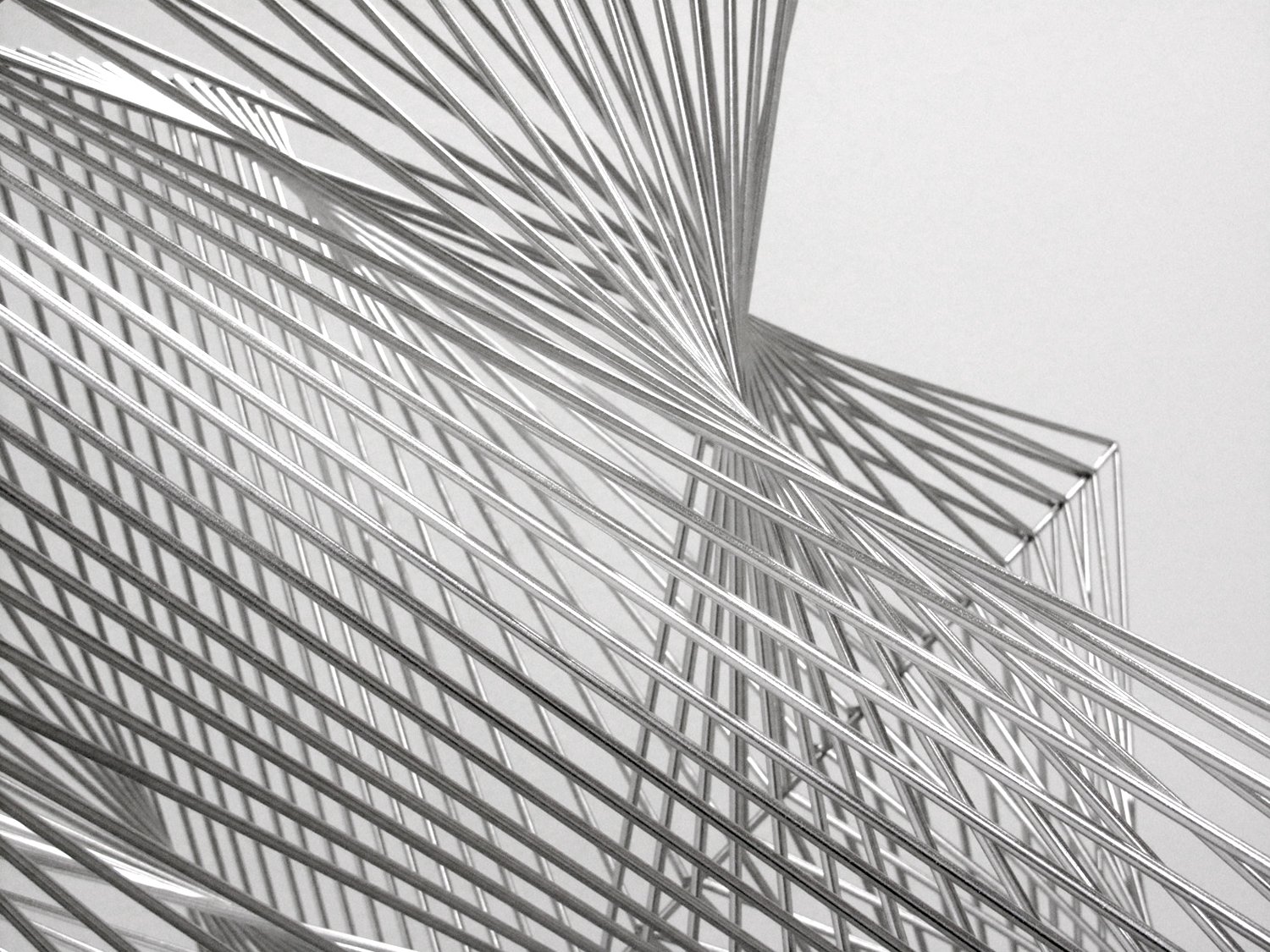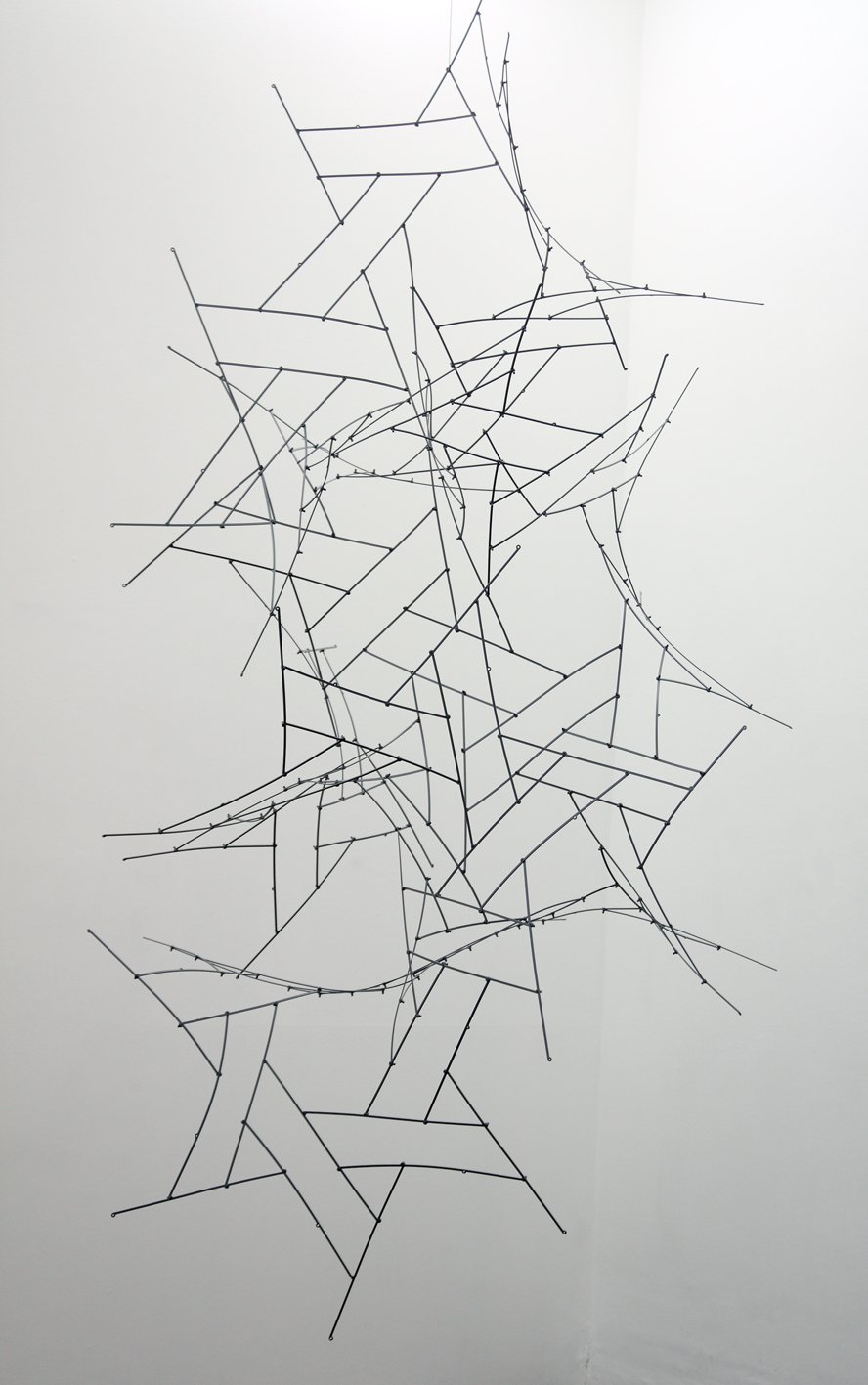
SCHLEICHER/LANGE PARIS
TIMO NASSERI LARS ENGLUND
21 October, 2010 - 18 December, 2010

-
The catalogue accompanying the major retrospective of Swedish artist Lars Englund contains several hundred sketches, diagrams and curves. Interestingly, it is on browsing these pages that you realise that there are many similarities in the work of the two artists, Lars Englund and Timo Nasseri – although their different backgrounds, ages and career paths might seem likely to preclude any such connection.
Lars Englund is well renowned as one of Sweden’s leading artists, having come to the fore in the 1960s and 1970s; Timo Nasseri is a young artist, born to a German mother and an Iranian father, who lives and works in Berlin. Their work is being brought together in the gallery for their first joint exhibition. The drawings reveal the principal aspects of the work of Lars Englund, which are the same as those that inform the work of Timo Nasseri: an obsession with structure, an exploration of form which draws its abstraction from the structural elements of construction, materials and the dynamic relationship between shapes.
Both Englund and Nasseri use mathematical abstraction to juxtapose forms created according to rules as rigid as they are poetic. Their work brings us face to face with the world and a form of philosophical thought that expresses it. Englund and Nasseri also share a predilection for placing contemporary materials within a geometric tradition that is at once contemporary, in referencing 20th century art history, and primordial, in calling to mind mathematics; as Aristotle points out, the origins of mathematics are idle and playful (origins that are less specifically functional, then, and rather in the realm of aesthetics and knowledge). In this way their consideration of form becomes a means of uncovering the world and the human spirit. Their interest in unusual, largely unexplored materials (such as polycarbonate or polished steel) and in construction materials, whose appearance they alter, brings something unique to their work, a sort of hyper-current universality.
The Pars pro toto works (“a part for the whole” in Latin) that Englund unveiled in 1978 in the Scandinavia Pavilion at the Venice Biennale have been reproduced as anaglyph images in the catalogue and as such could be looked at through 3D glasses. In the gallery Timo Nasseri often presents mathematical explorations which, for example, he applies to complex designs that he draws straight onto the wall with a marker pen. These constitute the “negative” of his much-admired Epystrophy series of sculptures embedded into the wall. This exploration of the movement between image and volume lies at the very heart of the history of art as well as being key to modern society’s tools of communication. In this exhibition, Lars Englund presents paintings from the series Polychromes, paintingsculptures with a sense of organic repetition. There will also be sculptures from the group entitled Entanglements, which look at once industrial and organic, and which derive a certain dynamism from their polished stainless steel rods pointing in different directions.
Timo Nasseri, meanwhile, will be showcasing new sculptures in the exhibition, one of which is Allotropy (from the same series as the sculpture which earned him the Abraaj Capital Art Prize this year). The piece also creates a dynamic through the staggered placement of metal rods. The process is an essential part of both artists’ work: calculations, transposition and assemblage make the work what it is. Abstraction creates a gateway into a different space and dimension where mathematics, biology, ethics and politics are brought together in terms of their connection to the position of the spectator; the sculpture Glance by Timo Nasseri, at once a theorem, a mask and a mirror, is a superb example of this.